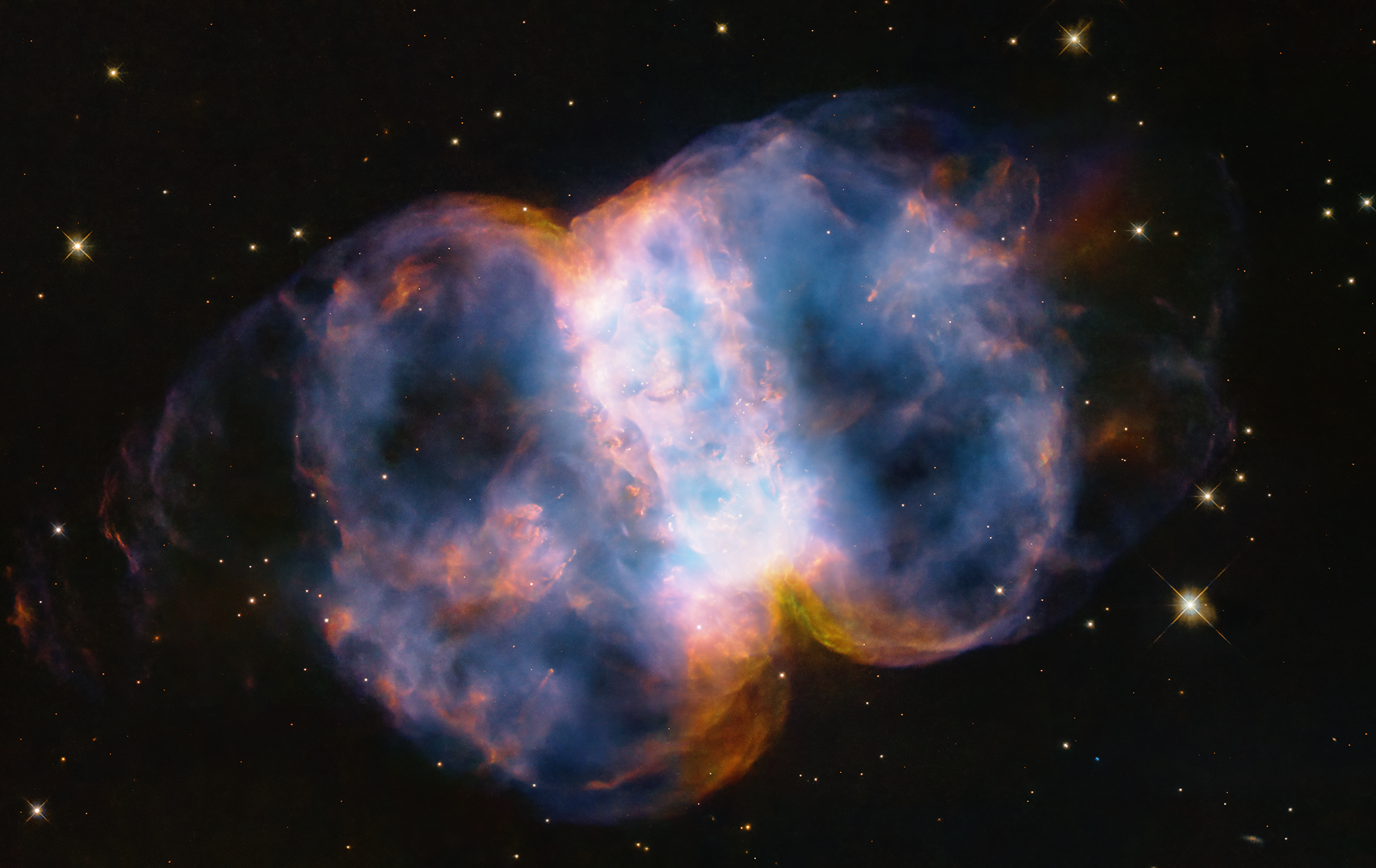In celebration of the 34th anniversary of the launch of NASA’s Hubble Space Telescope, astronomers took a snapshot of the Little Dumbbell Nebula, also known as Messier 76, or M76, located 3,400 light-years away in the northern circumpolar constellation Perseus. The name ‘Little Dumbbell’ comes from its shape that is a two-lobed structure of colorful, mottled, glowing gases resembling a balloon that’s been pinched around a middle waist. Like an inflating balloon, the lobes are expanding into space from a dying star seen as a white dot in the center. Blistering ultraviolet radiation from the super-hot star is causing the gases to glow. The red color is from nitrogen, and blue is from oxygen.
NASA, ESA, STScI
To celebrate the 34th anniversary of the Hubble Space Telescope’s launch, the telescope captured an image of the Little Dumbbell Nebula, or M76. M76 is a planetary nebula, an expanding shell of glowing gases that were ejected from a dying red giant star that eventually collapses to an ultra-dense and hot white dwarf. It gets its descriptive name from its shape: a ring, seen edge-on as the central bar structure, and two lobes on either opening of the ring.
Since its launch in 1990 Hubble has made 1.6 million observations of over 53,000 astronomical objects. Most of Hubble’s discoveries were not anticipated before launch, such as supermassive black holes, the atmospheres of exoplanets, gravitational lensing by dark matter, the presence of dark energy, and the abundance of planet formation among stars.
Learn more about the Little Dumbbell Nebula and Hubble.
Image Credit: NASA, ESA, STScI
为庆祝NASA传奇的哈勃太空望远镜发射34周年,天文学家拍摄了位于3,400光年外北天拱极星座英仙座的小哑铃星云(也称为梅西耶76、M76或NGC 650/651)的快照。小哑铃之名源自其形状,它是一个由色彩斑斓、斑点状、发光气体构成的双瓣结构,类似于中间被捏紧的气球。就像一个膨胀的气球,这些瓣从中心可见的一颗垂死恒星扩张进入太空。来自超热恒星的剧烈紫外线辐射使得这些气体发光。红色来自氮分子,蓝色来自氧分子。
NASA, ESA, STScI
4月24日,为了庆祝NASA传奇的哈勃太空望远镜发射34周年,天文学家拍摄了位于3,400光年外北天拱极星座英仙座的小哑铃星云(M76)的快照。M76被归类为行星状星云,它是一颗垂死的红巨星喷出的炽热气体的膨胀外壳。这颗恒星最终坍缩成一颗密度极高的热白矮星。它之所以得到这个描述性名称,是因为它的形状:一个环,从中央的棒状结构边缘看上去,以及环的两端各有一个瓣。
自1990年发射以来,哈勃已经对超过53,000个天文对象进行了160万次观测。哈勃的许多发现在发射前是未被预料到的,例如超大质量黑洞、系外行星的大气层、由暗物质引起的引力透镜效应、暗能量的存在,以及恒星之间大量的行星形成。
影像来源: NASA,ESA,STScI



